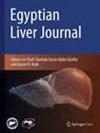Enormous ectopic liver tissue at the gastrohepatic ligament: a rare entity at Muhimbili National Hospital, Tanzania
IF 0.7
Q4 GASTROENTEROLOGY & HEPATOLOGY
引用次数: 0
Abstract
Ectopic liver tissue (ELT) is a developmental abnormality in which liver tissue develops at an extrahepatic site without connection to the true liver. It is a rare entity with an incidence of 0.24–0.56% according to data described in laparoscopic or autopsy studies. The detailed mechanism behind the development of ELT is poorly understood. ELT predominantly has an asymptomatic nature, even by means of radiological studies the diagnosis of ELT without surgery or autopsy is difficult. ELT has been reported mostly to be found frequently on the gallbladder and rarely on the gastrohepatic ligament. ELT has increased the potential risk of HCC which makes the resection crucial. Due to its variations anatomically, ELT recognition should gain clinical importance and surgeons need to be aware of these possible disparities. Case presentation. We present a 59-year-old female from Western Tanzania was presented to us with 2-month history of painless upper abdominal swelling. An abdominal CT scan was performed, and it revealed a large mass located at the gastrohepatic region with blood supply mainly from the left hepatic artery and omentum. Technically difficult excision of 17 × 12 cm tumor at gastrohepatic ligament was performed, with uneventful recovery. Post-operative histology results revealed capsulated hepatic parenchyma without the biliary components and limited sinusoids with tissue degeneration. To date, no complications happened during follow-up for one year. ELT is a rare entity with a predominantly asymptomatic nature. Preoperatively diagnosis is difficult even with images. It has anatomical variation and is hardly found along the gastrohepatic ligament. ELT has increased the potential risk of HCC which makes the resection crucial. Increased awareness of this congenital anomaly may result in increased detection rates.胃肝韧带处的巨大异位肝组织:坦桑尼亚穆欣比利国立医院的罕见病例
异位肝组织(ELT)是一种发育异常,即肝组织在肝外部位发育,与真正的肝脏没有联系。根据腹腔镜或尸体解剖研究的数据,其发病率为 0.24%-0.56%,是一种罕见病。人们对 ELT 的详细发病机制知之甚少。ELT 主要无症状,即使通过放射学研究,在不进行手术或尸检的情况下也很难诊断 ELT。据报道,ELT 多见于胆囊,很少见于胃肝韧带。ELT 增加了发生 HCC 的潜在风险,因此切除至关重要。由于ELT在解剖学上的变化,ELT的识别在临床上应越来越重要,外科医生需要意识到这些可能的差异。病例介绍。我们接诊了一名来自坦桑尼亚西部的 59 岁女性,她因无痛性上腹部肿胀 2 个月的病史前来就诊。她接受了腹部 CT 扫描,结果显示胃肝区有一个巨大肿块,血供主要来自左肝动脉和网膜。在胃肝韧带处进行了技术难度较高的 17 × 12 厘米肿瘤切除术,术后恢复顺利。术后组织学检查结果显示,肝实质被包裹,无胆汁成分,肝窦局限,组织变性。迄今为止,一年的随访未发现并发症。ELT是一种罕见病,主要无症状。即使有图像,术前诊断也很困难。它在解剖学上存在变异,几乎不会沿着胃肝韧带出现。ELT 增加了发生 HCC 的潜在风险,因此切除至关重要。提高对这种先天性异常的认识可能会提高检出率。
本文章由计算机程序翻译,如有差异,请以英文原文为准。
求助全文
约1分钟内获得全文
求助全文

 求助内容:
求助内容: 应助结果提醒方式:
应助结果提醒方式:


